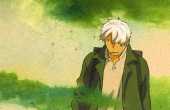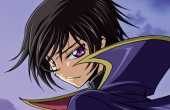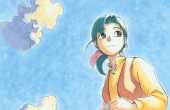blautoothdmand
Blogger/essayist with an academic background in art history. Writes mostly about anime but sometimes other stuff as well.
Contributor II
- Plebian Penman
- Lurker
- Sharp-Eyed Citizen
- ?
- Articles
3 - Featured
3 - Comments
12
- Ext. Comments
5 - Processed
4 - Revisions
4
- Topics
3 - Topics Taken
2 - Notes
4
- Topics Proc.
4 - Topics Rev.
0 - Tides
2
- Tides Proc.
0 - Tides Rev.
0 - Tide Comments
1
- Points
1812 - Rank
94 - Score
734
Latest Articles
Latest Topics
The quest for realism in video game graphicsThroughout the technological evolution of modern video games, there has existed a prominent lineage of photorealistic pursuit, of aiming closer and closer toward a graphic image that resembles "the real thing." While one might argue that this lineage is just a natural progression in the utilization of increasing graphic capacity, such a progression doesn't necessarily have to go in a realist direction as there are other ways to achieve visual detail. My hypothesis is that it has to do with mimesis; the concept that an image is (metaphysically speaking) a representation/imitation of a "real" counterpart object, which has permeated Western aesthetic thought and culture since Ancient Greece. I would love to see an article that examines the lineage of realism in video game graphics through the context of mimesis, looking at the aesthetic theories of Plato and subsequent philosophers and how they have influenced Western visual culture. Or perhaps there are some other potential factors behind the lineage that I'm unaware of – nonetheless it would be a really interesting topic to explore! |
A History of the Snap ZoomAlso known as "whip zoom" or "crash zoom", this is a cinematic technique where the camera rapidly zooms in on an object for dramatic effect. In modern cinema it can be seen in the works of both Edgar Wright and Quentin Tarantino – the former using it as a form of comedic irony, and the latter using it as part of his homages to older cinema. That being said, the snap zoom can also be seen as a classic trope in westerns and kung fu films as well as horror movies. This article would be a historical overview of the snap zoom; its origin, its place in different genres (i.e. the potential difference between a "western" snap zoom and a "kung fu" or a "horror" one), and perhaps how it has evolved from a simple camera technique to such a stylistic stamp.
|
The influence of Lupin III on Cowboy BebopThe 1998 anime classic Cowboy Bebop is a mishmash of various genres, media references, cultures and ethnicities – but one of its more prominent influences is Lupin III. Director Shinichiro Watanabe is an outspoken Lupin III fan, and it's apparent how his fandom seeped into his directorial debut not least in terms of its ensemble cast. This article would look at how Lupin III influenced Cowboy Bebop (similarities/dissimilarities), as well as how these influences were repurposed for Cowboy Bebop's own narrative. |
Latest Tides
∼∼∼∼∼∼∼∼∼∼∼∼ Tidearticle | anime The art of repetition and uniqueness within sameness - Overthinking Endless EightEndless Eight – possibly one of the most controversial phenomenons to have ever come out of anime. Ever since Kyoto Animation in 2009 decided to broadcast eight different versions of the same episode for eight weeks in a row as part of the second season of the widely popular series The Melancholy of Haruhi Suzumiya, a lot of debate has been formed around the subject. Particularly it made a lot of the show's initial fans angry, and understandably so; not only must it have been frustrating to realize that the brand new season of your beloved show mainly consists of rehashes of one and the same episode, but having to sit through eight weeks of that episode can't have been a too pleasant experience. On top of this, multiple theories have emerged regarding what the point of it all was. Some say that it's meant for the audience to experience the same frustration as Yuki Nagato – the only character in the show to actually live through the in total 15 532 loops without her memory being reset each time – and thus get a better understanding of her motivations in the later movie The Disappearance of Haruhi Suzumiya. Others argue that it was just a giant prank that KyoAni felt like doing to the then borderline fanatic Haruhi fanbase. Few people though seem to have done a deeper exploration into this arc's potential artistic merit. In this post, I relate Endless Eight to two different concepts found within two different realms of art. The first concept is within music, and how through the practice of repetition one can achieve a sense of endless now. Here, Danish author and poet Niels Frank's book Seven seals of silence is mainly used as reference, in which he describes how Bach and the minimalist composers use repetition in two different ways and thus achieve different forms of infinity. This is furthermore compared to the works of ambient musician William Basinski, who's frequent use of tape loops works as a perfect example on this concept. The second concept is found in French artist Marcel Duchamp's art piece The Green Box; a box which he manually reproduced and sold as part of his other piece The Large Glass. By the fact that each copy of this box had slightly different qualities to it and thus was in one way or another unique (much due to them being manually reproduced), Duchamp wanted to highlight the fact that all things that are seemingly the same is divided by a slight variation, and thus he sought finding a therapeutic way of coping with the increasing sameness of modern society. Through this concept, Endless Eight can partly be drawn to the same subject on the mundanity of modern life, but it can also more closely be drawn to the seemingly uneventful slice-of-life-genre that The Melancholy of Haruhi Suzumiya embodies.
|
∼∼∼∼∼∼∼∼∼∼∼∼ Tidearticle | anime The music of Kenji KawaiThe Japanese score composer Kenji Kawai has a both long and wide career behind his back. Having been active in the film score industry for nearly three decades, he has worked on a lot of different stuff over the years both inside and outside of Japan, including his longtime collaborations with cult directors Mamoru Oshii and Hideo Nakata, as well as Wilson Yip's Ip Man film series, anime series such as Higurashi no Naku Koro ni and the first Fate/Stay Night adaptation, and many more. Despite his wide variety of projects stretching between both mediums and genres, there exists a highly recognizable style, a flavor, within almost all of his works from the 90s and onwards. It's a style characterized by its calming yet captivating atmosphere, and which is highly prominent in but at the same time strangely applicable to his different musical approaches. But what is it that makes this "style" what it is? What elements does Kawai apply to his music in order to achieve this unique atmosphere? Well there are essentially three factors involved in the equation; the first one being the instrumentations. Kawai uses a very unique form of arrangements consisting of a blend between classical orchestra and 80s pop music, something that arguably has its roots in his early days. His score for the landmark film Ghost in the Shell from 1995 also served as a notable instrumental influence, as he for this project incorporated a lot of elements from eastern folk music which he then came to reuse for his later works. The second ingredient has to do with the mixing. Specifically reverb is something that Kawai uses quite heavily in order to achieve the atmospheric ambience of his music. This is most notable in his more laid back, minimalistic scores, although most distinguishable when comparing his straight-up classically orchestrated pieces to a more traditional classical performance, as you then hear where exactly the mixing differences lie. The third and arguably most essential ingredient is that of the writing, in which there are two major factors involved. The first one is Kawai's frequent use of add9 chords. The second has to do with the chord progressions, and how he incorporates chords in which one single note doesn't belong to the song's scale, thus making these chords fall into a suspenseful middle-ground between in and out of key. So as we can see, the music of Kenji Kawai is certainly a wide and interesting subject to dive into.
|
Latest Comments
| The Appeal of Slice of Life | |
Interesting point! I can totally see this; with the everyday brought to the forefront, you get a more detailed insight into what that everyday looks like culturally. This would be another appeal of the genre then! | The Appeal of Slice of Life |
Now that’s really interesting, because this is exactly what Azuma argues with his database theory. The idea that narrative is vastly secondary to characters, consequently making the characters transcend their narrative contexts and instead become part of a collective database. So when you say that you enjoy watching loli characters but haven’t seen most of their respective series, do you consume them through other pieces of media such as fan works and merchandise (what Azuma would call “derivative works”)? | The Appeal of Slice of Life |
Cool, so you’d be in the “Relaxation” camp then? | The Appeal of Slice of Life |
I think there are a couple of things worth considering in regards to your point. The first is that slice of life is character-driven and not plot-driven – that is, it’s driven by internal instead of external elements. The second is that it lacks a traditional dramatic structure: no overarching goal led by a conflict, no act structure providing buildup and payoff. On top of this it centers around everyday settings and mundane narrative events that are ostensibly dull compared to other stories. As a result, it may seem that it merely consists of a bunch of characters “doing nothing”, but (as I write in the “Characters” section) it’s not what they’re doing that’s of interest, but how they’re doing it as characters. Some series can be quite deceptive regarding the plot/character-hierarchy. In accordance with what you’re describing, they may set up a premise that suggests a plot-driven narrative, but which in reality is relatively insignificant. K-On! is on paper about a high school music ensemble, but really it’s about the growing friendship of a group of girls. All of the plotless shenanigans that the series mainly consists of serves to explore and develop the characters and group dynamics, thus contributing to the internal instead of the external element. I completely understand and respect if the genre isn’t for you though, it’s certainly a sentiment that you share with a lot of people. | The Appeal of Slice of Life |
You’re welcome! I hope you find something in the genre to your liking. | The Appeal of Slice of Life |
Yes, this is essentially my thesis in the “Relatability” section. Since we all generally live a mundane everyday, slice of life is able to present narratives that we can relate to as regular people. That’s really cool to hear that you have these types of connections! | The Appeal of Slice of Life |
Really great read! The youtube channel Wisecrack actually dropped a Bioshock analysis a while back where they, among other things, discussed this concept. It was really interesting to get a more in-depth study on the topic though. I especially liked the comparison you made between Andrew Ryan’s antiauthoritarian philosophy and Jack Ryan’s lack of free will. That contrasting relationship adds a whole new dimension to their confrontation with each other that I haven’t thought about before. | Bioshock and the Illusion of Choice in Gaming |



Indeed! Perhaps I should’ve noted this in the article, but the subgenre of “cut girls doing cute things” as conceptualized in the Western fandom is (from my impression) equivalent to the nichijoukei genre abroad. You bring up a very interesting point in regards to the appeal of these “cute girls”. “Innocence” is a major trait of the classic bishoujo – a central character type in the lineage of otaku sexuality – and as such also a major factor to her moe appeal. Moreover, the roles of “protector” and “admirer” that you describe are two typical moe responses to this innocence on the side of the otaku consumer subject. I kinda glossed over the Japanese side of the coin (partly because “slice of life” as a genre isn’t really a thing there in the same way that it is in the West) but you touched on a factor related to this side that is very much relevant to the discussion. Great insight!